I’d been waffling about buying a Taisho-era indigo piece for a while when this came up on Ichiroya, and while it was a bit more than I usually pay for kimono, the colour, size, and condition of it were all worth the investment in my mind. This is a houmongi with era-typical long sleeves and a beautiful, multiseasonal floral design. It’s got branches of ume (plum blossom), iris, botan (peony), and bamboo around the hem, and a bold, graphic stem of tachibana, which is probably my favourite floral motif. I love how squishy and fun they look!
It also has some gorgeous, lush embroidery on some of the geometric designs

However, I think one of my favourite things about this kimono is probably one of the most subtle. Woven directly into the fabric, before the dyeing process was started, is a gorgeous red and gold windowpane plaid. You’d never see detailing like this on a modern houmongi, as nowadays that sort of design is considered strictly informal. Naomi wrote a great piece on the qualities of indigo dye, and the transitional phenomenon of putting stripes (which are very casual by modern standards) on more formal kimono. It’s a trend I think is beautiful and needs to come back into vogue.
I’ve worn this kimono once, but only inside the yard, as I’m a little worried about wearing such an old piece out and about. Maybe one day when the right time and place come up, I will do so. I chose to pair it with a late-Showa era obi, which may seem odd but the clouds, grasses, and colours just seemed perfect with it. The obiage and obijime were a gift from a friend, and bring out the soft blue and olive tones in the kimono perfectly. For a vintage feel, I chose some burnt paulownia geta instead of zori.














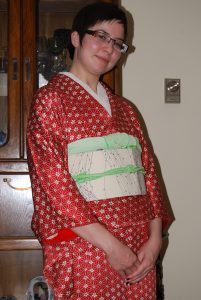
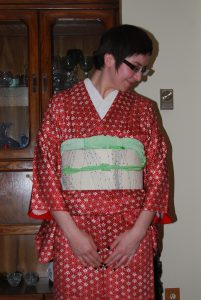
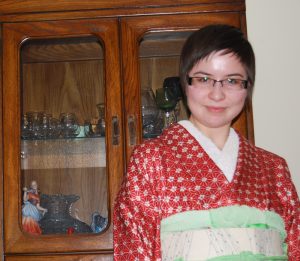
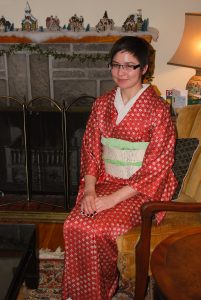
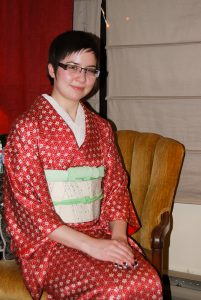
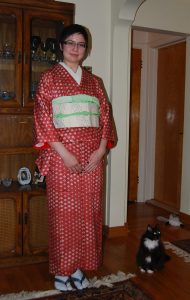
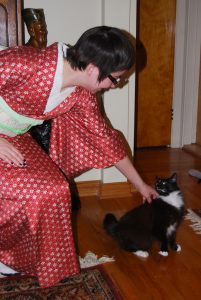
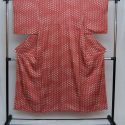
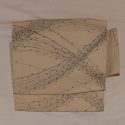
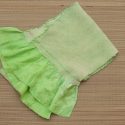
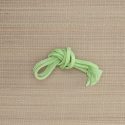

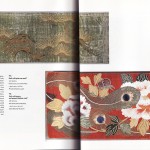
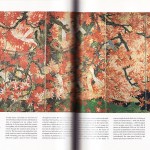
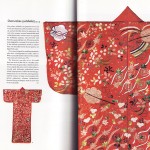
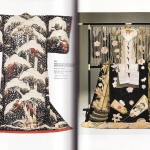












 Bebe Taian
Bebe Taian CHOKO Blog
CHOKO Blog Gion Kobu
Gion Kobu